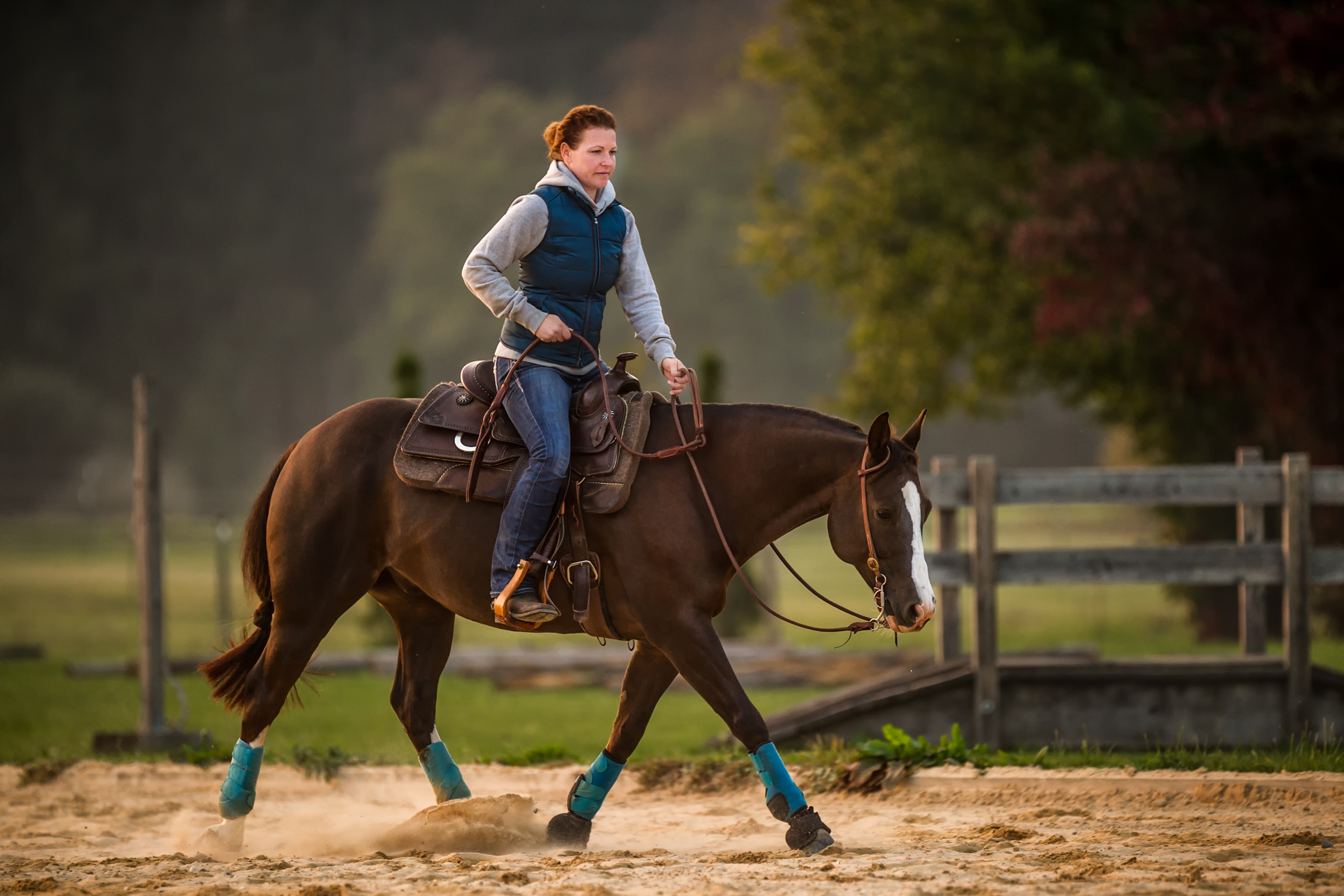4 ways to prevent spring training injuries
- May 14, 2024
- ⎯ Equus
Warmer weather is not far away, and it will feel good to shake off the winter doldrums and get back into the swing of things at the barn. Tempting as it may be to toss a saddle on your horse and head for the hills on the first balmy day of the season, it’s important to consider your horse’s readiness for the challenge. If you haven’t ridden much over the winter, he may have lost some conditioning during his time off, and you may need to spend a few weeks bringing him back to his previous level of fitness.
Pushing a horse into exertion he’s not yet ready to handle is a recipe for a number of health issues, including muscle strains as well as tendon and ligament injuries. However, a slow, careful approach—that accommodates his needs while adjusting for weather conditions—will help to get him back into shape and ready for summer activities.

1. Assess your horse’s current level of fitness. Heavy winter coats or blankets can obscure changes in a horse’s body. Run your hands over your horse to evaluate his general condition. Fitter muscles are bulkier and firmer and don’t “jiggle” when handled. Lack of muscle tone will also make bony areas, such as the hips and withers, more prominent, and the crest of the neck will feel flabby. An out-of-shape horse is also likely to have a duller coat and will produce frothy sweat. The less fit your horse is, the more time you need to allow to build his muscles. (If your horse has lost a significant amount of weight over the winter, have him examined by your veterinarian to look for underlying causes.)
Click here to learn what behavior may indicate lameness in horses.
2. Build fitness gradually. If your horse was well-conditioned last year, you can probably bring him back into shape in just a few weeks. The earliest stages of any conditioning program require long, slow distance work, mostly at a walk at first, with some intervals of trotting. Ideally, you’d be able to ride five or more days per week. If you can ride only three days a week, you can still accomplish your goal, but you’ll need to add a few more weeks to your plan. If you’re riding over trails, choose routes over less strenuous terrain for your earlier ventures. As your horse’s fitness increases, you’ll notice he will be less easily winded, his body will become more muscular, and he’ll be more “forward” and eager. If you choose to monitor his pulse, you’ll note that his heartbeat will return to its normal resting rate sooner after faster, more intense work.
3. Watch for bad footing. Injuries are most likely to occur in the early stages of a training program, when muscles, tendons and other structures are still adjusting to the workload. Couple that with the riding conditions of early spring—thaws that produce mud, which may be obscured under still-melting ice and snow—and the chances for slips, falls and serious injuries increase dramatically. When you encounter slick or uneven footing on a trail, slow to a walk and let your horse pick his own way through or around it.
4. Keep your horse cool. You may associate heat stress with scorching summer temperatures, but if your horse still has a thick winter coat, any sweat he produces won’t evaporate readily, and he can easily overheat, even on a cool day. Your horse needs to work until he sweats in order to improve his fitness, but if he’s getting too hot, ease back on the intensity and allow him plenty of time to cool down and dry out. Clipping the heavy winter coat may be an option, but unless you are prepared to blanket your horse, it’s not a good idea if you’re still experiencing freezing spells. As always, let your horse drink his fill of fresh water after any workout, and give him access to a salt block.
This article first appeared in EQUUS issue #449
Don’t miss out! With the free weekly EQUUS newsletter, you’ll get the latest horse health information delivered right to your in basket! If you’re not already receiving the EQUUS newsletter, click here to sign up. It’s *free*!








